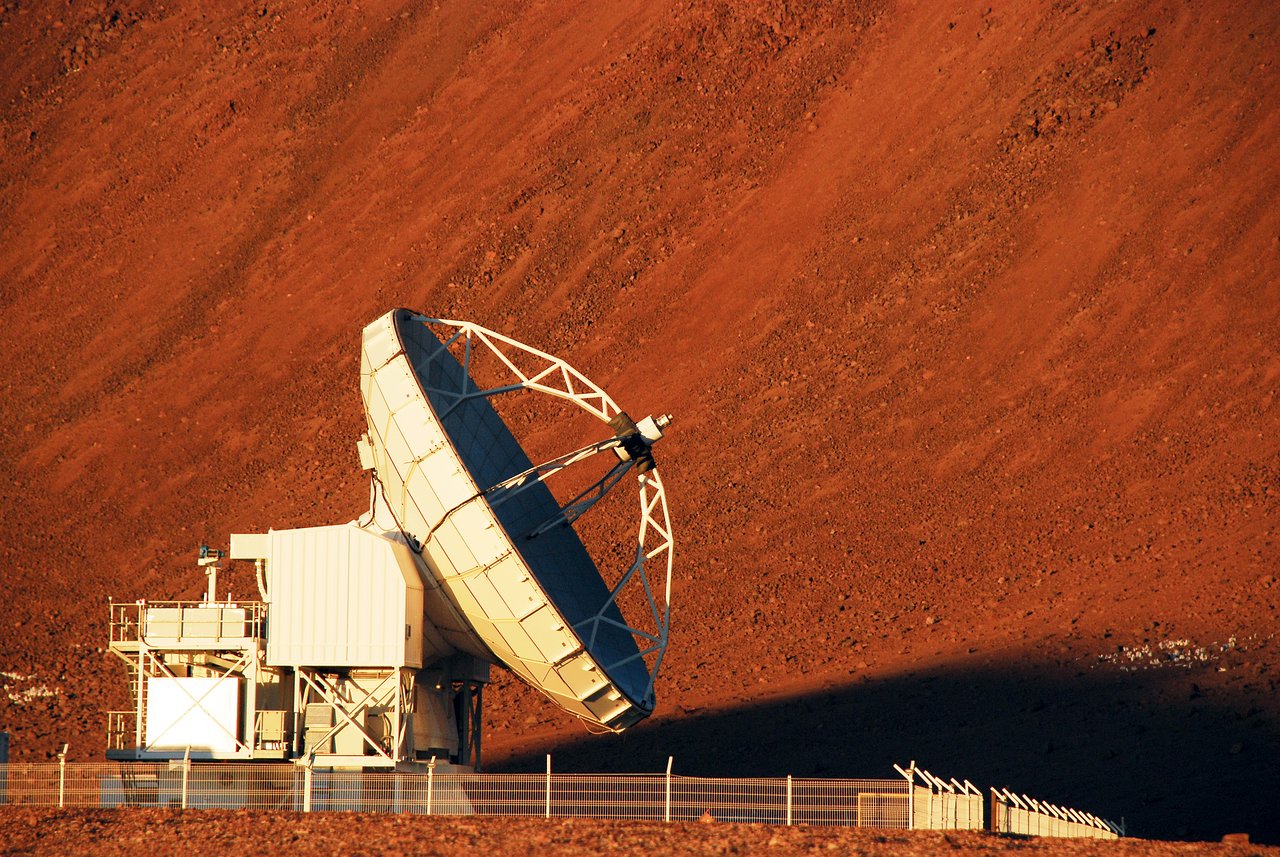
Reference paper
The Atacama Pathfinder EXperiment (APEX) – a new submillimeter facility for southern skies.
R. Güsten, L.-Å. Nyman, P. Schilke, K. Menten, C. Cesarsky and R. Booth, Astronomy and Astrophysics, (2006), Volume 454, Number 2, L13-L16.
Fact sheet
Location | Llano de Chajnantor. 50 km east of San Pedro de Atacama, Northern Chile |
| Geodetic Coordinates1 | Latitude: 23º 00′ 20″.8037 South Longitude: 67º 45′ 32″.9035 West Altitude: 5104.47 m |
| Geocentric coordinates (ITRF2005)1 | X : 2225039.5297 m Y: -5441197.6292 m Z: -2479303.3597 m |
| Main reflector | Diameter: 12 m 264 aluminum panels with an average panel surface r.m.s. of 5 μm. Full surface accuracy: < 15 μm r.m.s. |
| Secondary reflector | Diameter: 0.75 m. Hyperboloidal Aluminum Polished to an average surface r.m.s. of 2 μm. |
| Manufacturer | Vertex Antennentechnik |
| Mass | 125,000 Kg |
| Mounting | Alt-azimuthal |
| Primary focal length | 4.8 m |
| Cassegrain focal ratio f/D | 8 |
| Beam width | 7.″8 × (800 / f [GHz]) |
| Pointing accuracy (r.m.s.) | < 2″ all over the sky Pointing accuracy on track, 0.″6 |
| Receiver cabins | 2 Nasmyth (A,B) + 1 Cassegrain (C) |
1 Coordinates measured as described in Wagner at al. 2015, A&A, 581, A32.
Wobbling secondary
In 2007 the static subreflector was successfully replaced by a chopping subreflector. The wobbler, in the cases where it can be used, improves significantly the quality of the observations. By chopping quickly between two positions on sky (the “throw”), the observations will be less sensitive to time dependent instabilities in the receivers and the atmosphere. Currently, the wobbler can only be used together with the heterodyne receivers.
In 2018 a new wobbling secondary was installed with a new and more advanced design. It has the following specifications:
| Chop direction | Cross elevation |
| Wobbling rate (R) | Up to 2.0 Hz |
| Maximum wobbling throw (Tmax) | Tmax = 300″ maximum offset between the on and off positions is 600″ |
| Duty cycle | up to 96% at 0.5 Hz 80-90% at 1.0-1.5 Hz , throw 120″ |
| Operating modes | Negative (left) Positive (right) Symmetric (left-right-left-right) |
When doing spectroscopic measurements with the heterodyne receivers it is recommended not to use R = 1.0 Hz as switching rate since it will be in resonance with the cryogenics pump cycle of 1 Hz. However, in the case of total power scans with the heterodyne receivers it is an advantage to use R = 1.0 Hz. The wobbling secondary is improving the quality of the observations when observing compact sources with extent less than twice the wobbler throw (up to 8-10 arc minutes). Typical sources where its use is beneficial are circumstellar envelopes, planets, molecular hot cores, and most galaxies.
Telescope efficiencies
We maintain a page with the antenna efficiencies measured all over the years, based on cross-scans towards planets. You will need these to convert your antenna temperatures into physical units.